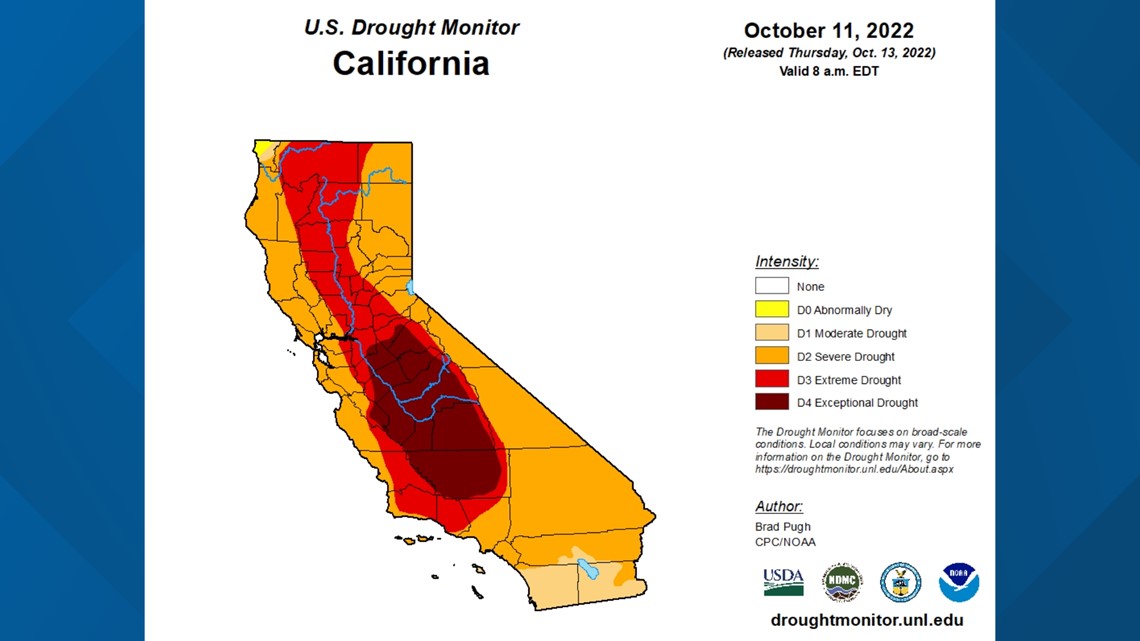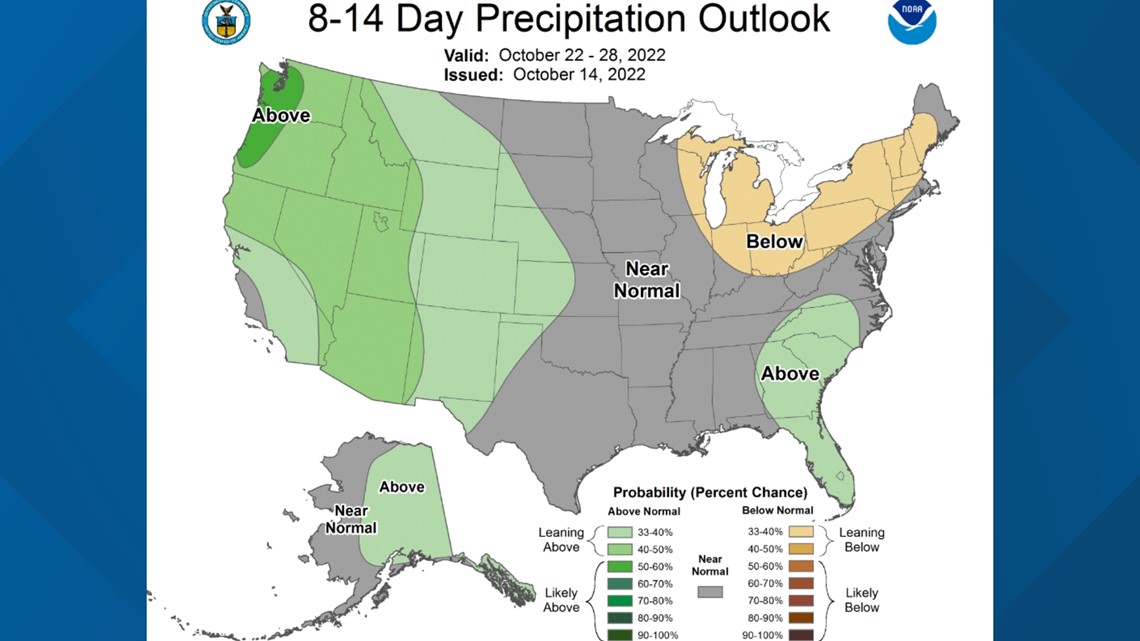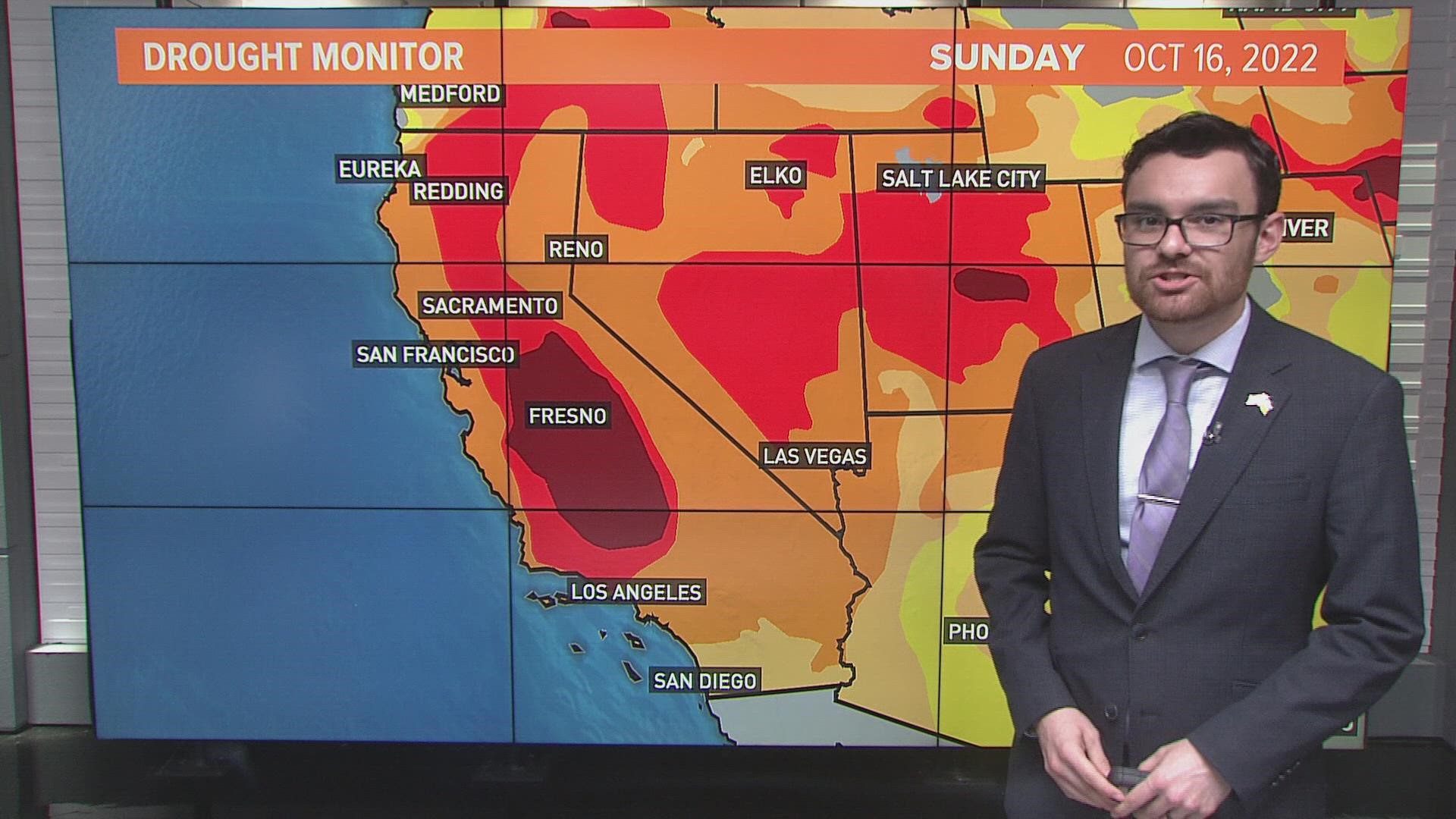SACRAMENTO, Calif. — Another dry week is ahead for northern California, but a pattern shift could be on the way in the coming weeks.
October is usually when California gets its first good soaking of the year, or a complete deluge as was the case last year when Sacramento broke its all time daily rainfall record. Sacramento usually averages 0.85 inches of rain in October.
As dry weather persists, so does the drought. While there were no changes to this week's edition of the drought monitor, exceptional drought conditions still blanket most of the San Joaquin Valley and extreme drought covers just under half of the parched state.


October has been a very warm and dry start the new water year, but the Climate Prediction Center's 8-14 day outlook map provides some hope for relief.


RELATED: Sacramento Weather Forecast
As expected, reservoir levels are low across the state as drought drags into its fourth year. The upcoming water year will be critical for water security in the state.
While the California reservoir system is obviously vital to meeting water needs, an equally important aspect of the system is flood control. Sacramento is considered to be one of the most flood prone cities in the country.
Officials from state and local agencies must balance the needs of the residents, environment and agriculture along with flood control. That last point is why it's common to see reservoir levels lower than expected.
"We have to keep water temperatures cold enough so that salmon and other wildlife can exist within the waterways, so that takes a certain amount of water," said Daniel Bowers, Director of Emergency Management for the City of Sacramento. "We also have agriculture needs so we need to keep the flows going, and then we also need to have space, and ample space for any sort of winter storms that may be coming,"
Jim Peifer of the Regional Water Authority echoed a similar message about the reservoir storage.
"We like to actually keep our surface water reservoirs kind of empty at that time of year in order to accommodate storm events and stuff like that, so the time that we are trying to focus on flood control will be the time when the water supply rushes down from the mountains," said Peifer.
The agencies work with the National Weather Service to control how much water they keep in the reservoirs. Forecast models are improving, giving officials more time and clarity in decision making.
Forecast Informed Reservoir Operations (FIRO) is leading the charge when it comes to forecasting and impacts on reservoir levels.
The goal of FIRO is to develop, demonstrate and implement tools and science that enable more effective management of reservoirs by leveraging improvements in weather and water forecasts. FIRO creates a natural linkage between research, applications, technology, reservoir operations and water control manuals to enable continuous improvement based on state-of-the-science, according to their website.
According to FIRO, their ability to forecast has improved greatly, especially along the west coast. This skill will hopefully result in more efficient water storage as the drought drags on and Californians grow increasingly anxious about the future of water in the state.
WATCH ALSO:



















